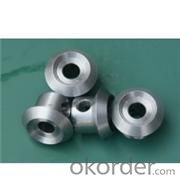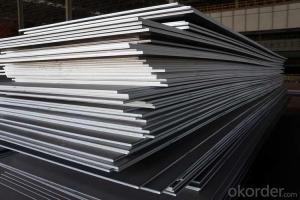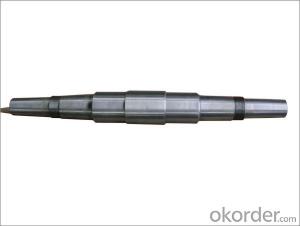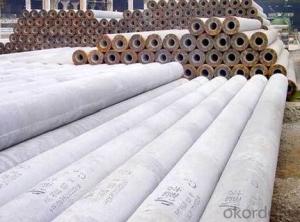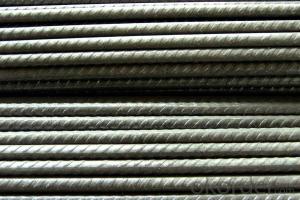Steel Profile Hot Rolled with High Quality for Construction
- Loading Port:
- China main port
- Payment Terms:
- TT or LC
- Min Order Qty:
- 500 m.t.
- Supply Capability:
- 2000 m.t./month
OKorder Service Pledge
OKorder Financial Service
You Might Also Like
Product Description:
OKorder is offering Steel Profile Hot Rolled with High Quality for Construction at great prices with worldwide shipping. Our supplier is a world-class manufacturer of steel, with our products utilized the world over. OKorder annually supplies products to European, North American and Asian markets. We provide quotations within 24 hours of receiving an inquiry and guarantee competitive prices.
Product Applications:
Steel Profile Hot Rolled with High Quality for Construction are ideal for structural applications and are widely used in the construction of buildings and bridges, and the manufacturing, petrochemical, and transportation industries.
Product Advantages:
OKorder's Steel Profile Hot Rolled with High Quality for Construction are durable, strong, and resist corrosion.
Main Product Features:
· Premium quality
· Prompt delivery & seaworthy packing (30 days after receiving deposit)
· Corrosion resistance
· Can be recycled and reused
· Mill test certification
· Professional Service
· Competitive pricing
Packaging & Delivery:
Packaging Detail: products are packed in bundle and then shipped by container or bulk vessel, deformed bar is usually naked strapping delivery, when storing, please pay attention to moisture proof. The performance of rust will produce adverse effect.
Each bundle weight: 2-3MT, or as required
Payment term: TT or L/C
Delivery Detail: within 45 days after received advanced payment or LC.
Label: to be specified by customer, generally, each bundle has 1-2 labels
Trade terms: FOB, CFR, CIF
FAQ:
Q1: Why buy Materials & Equipment from OKorder.com?
A1: All products offered byOKorder.com are carefully selected from China's most reliable manufacturing enterprises. Through its ISO certifications, OKorder.com adheres to the highest standards and a commitment to supply chain safety and customer satisfaction.
Q2: How do we guarantee the quality of our products?
A2: We have established an advanced quality management system which conducts strict quality tests at every step, from raw materials to the final product. At the same time, we provide extensive follow-up service assurances as required.
Q3: How soon can we receive the product after purchase?
A3: Within three days of placing an order, we will begin production. The specific shipping date is dependent upon international and government factors, but is typically 7 to 10 workdays.
Images:


- Q: What are the different methods of steel billet cooling?
- There are several methods of steel billet cooling, including air cooling, water cooling, and accelerated cooling.
- Q: What are the main factors that affect the availability of steel billets?
- There are several main factors that affect the availability of steel billets. Firstly, the availability of raw materials plays a crucial role. Steel billets are produced by melting iron ore, along with other materials such as coal and limestone, in a blast furnace. The availability and cost of these raw materials can greatly impact the production of steel billets. Any disruptions in the supply chain, such as a shortage of iron ore or a spike in prices, can lead to a decrease in the availability of steel billets. Secondly, the demand for steel billets also influences their availability. The construction and manufacturing industries are the primary consumers of steel billets, using them to produce various steel products such as bars, rods, and beams. If there is a surge in demand for steel products, it can strain the availability of steel billets, especially if the production capacity is not able to keep up with the increased demand. Furthermore, market dynamics and economic conditions can impact the availability of steel billets. Factors such as fluctuations in steel prices, changes in government policies, and trade barriers can affect the overall supply and demand balance. For example, the implementation of tariffs or restrictions on steel imports can reduce the availability of steel billets in a particular region, as domestic production may not be able to meet the demand. Additionally, technological advancements and production capabilities also play a role in determining the availability of steel billets. Improvements in manufacturing processes, such as the use of electric arc furnaces or continuous casting, can increase production efficiency and output. On the other hand, any technical issues or maintenance problems in steel plants can lead to disruptions in production and subsequently reduce the availability of steel billets. In conclusion, the availability of steel billets is influenced by factors such as the availability and cost of raw materials, the demand for steel products, market dynamics, economic conditions, and technological advancements. These factors can individually or collectively impact the availability of steel billets, and it is important for stakeholders in the steel industry to monitor and address these factors to ensure a stable supply of steel billets.
- Q: Can steel billets be used for making architectural components?
- Architectural components can indeed be made using steel billets. Steel billets are semi-finished products commonly utilized in the production of various steel items, including architectural components. These billets undergo heating and are subsequently transformed into the desired shape through processes such as forging, extrusion, or rolling. Among the architectural components that can be created are structural elements like beams, columns, and trusses, as well as decorative elements like handrails, facades, and ornamental fixtures. Steel is a highly preferred material for architectural components due to its exceptional strength, durability, and versatility. It can be easily shaped into intricate forms, enabling architects and designers to construct distinctive and visually appealing structures. Moreover, steel exhibits remarkable resistance to weathering, corrosion, and fire, further enhancing its suitability for architectural purposes.
- Q: What do you mean by adding carbon to a table tennis racket?
- What a professional? I don't know what is known but with carbon carbon line take this hit the ball the more comfortable to take shape
- Q: What is the role of steel billets in the production of automotive components?
- Steel billets play a crucial role in the production of automotive components. These billets are semi-finished metal products that serve as the raw material for various parts used in the automotive industry. Firstly, steel billets are used to manufacture engine components such as crankshafts, camshafts, and connecting rods. These are vital parts that contribute to the smooth functioning of the engine. The strong and durable properties of steel make it an ideal material for these components, ensuring they can withstand the high temperatures and pressures within the engine. Secondly, steel billets are used to produce chassis and suspension components. These include parts like control arms, steering knuckles, and axle shafts, which are responsible for the vehicle's stability, maneuverability, and overall performance. Steel's high strength-to-weight ratio and excellent fatigue resistance make it suitable for these safety-critical components. Furthermore, steel billets are utilized in the production of transmission and drivetrain components. These include gears, shafts, and clutch plates, which are essential for transmitting power from the engine to the wheels. Steel's toughness, wear resistance, and ability to handle high torque loads make it an ideal material for these parts, ensuring their durability and reliability. Additionally, steel billets are used in the manufacture of body and interior components. These can include door hinges, brackets, seat frames, and various structural parts. Steel's versatility, formability, and corrosion resistance make it an excellent choice for these components, providing strength and protection to the vehicle's occupants. Overall, steel billets form the foundation for the production of a wide range of automotive components. They provide the necessary strength, durability, and reliability required for critical parts in engines, chassis, transmission systems, and body structures. Without steel billets, the automotive industry would struggle to produce high-quality and safe vehicles.
- Q: What is the chemical composition of steel billets?
- Steel billets are primarily composed of iron, with varying amounts of carbon and other alloying elements such as manganese, silicon, and trace amounts of sulfur and phosphorus.
- Q: What are the different types of steel billet forging defects?
- Some common types of steel billet forging defects include surface cracks, internal voids or cavities, improper grain flow, and dimensional inconsistencies. Other defects may include porosity, inclusions, and decarburization.
- Q: Can steel billets be used for making architectural structures?
- Yes, steel billets can be used for making architectural structures. Steel billets are semi-finished products that are typically cast into specific shapes and sizes before being further processed into different steel products. These billets can be used as a raw material for fabricating various architectural structures such as beams, columns, frames, and trusses. Steel is a widely used material in the construction industry due to its high strength, durability, and versatility. It offers several advantages over other construction materials, including its ability to withstand heavy loads, resist corrosion, and provide excellent fire resistance. Steel billets can be processed and shaped into different forms, allowing architects and engineers to create innovative and complex architectural designs. Furthermore, steel structures offer several benefits in terms of cost-effectiveness, speed of construction, and sustainability. Steel is a highly recyclable material, making it an environmentally friendly choice. The use of steel billets in architectural structures enables the construction of large and complex structures with greater precision and efficiency. Overall, steel billets can be effectively used in the construction of architectural structures, offering numerous advantages in terms of strength, durability, design flexibility, and sustainability.
- Q: How are steel billets used in the production of crankshafts?
- Steel billets are used in the production of crankshafts as they serve as the raw material that is shaped and machined to form the main body of the crankshaft. These billets are heated, forged, and then machined to create the precise shape and dimensions required for the crankshaft. This process ensures the strength, durability, and performance of the crankshaft in engines.
- Q: What is the role of steel billets in the manufacturing of automotive transmission systems?
- Steel billets play a crucial role in the manufacturing of automotive transmission systems. These billets are raw material forms of steel that are used as a starting point for shaping and forming various components of the transmission system. One of the main uses of steel billets in the manufacturing process is for the production of gears, shafts, and other critical transmission components. These billets are forged or machined to create the desired shape, strength, and dimensional accuracy required for these components. The use of steel billets ensures that these parts possess the necessary strength, durability, and resistance to wear and tear, which are essential for the proper functioning of the transmission system. Additionally, steel billets are also utilized in the production of transmission casings. These casings provide the housing and protection for the internal components of the transmission system. Steel billets are cast or molded into the desired shape to create these casings, ensuring they have the necessary strength and rigidity to withstand the forces and stresses experienced by the transmission system. Moreover, the use of steel billets allows for the customization and optimization of the transmission system components. Manufacturers can choose specific grades of steel billets based on their desired properties, such as hardness, toughness, or corrosion resistance. This flexibility enables the production of transmission systems that meet the specific requirements of different automotive applications, whether it be for high-performance vehicles or heavy-duty trucks. In summary, steel billets are integral to the manufacturing of automotive transmission systems. They provide the raw material from which gears, shafts, casings, and other components are formed. Steel billets ensure the strength, durability, and customization potential necessary to create reliable and efficient transmission systems for various automotive applications.
Send your message to us
Steel Profile Hot Rolled with High Quality for Construction
- Loading Port:
- China main port
- Payment Terms:
- TT or LC
- Min Order Qty:
- 500 m.t.
- Supply Capability:
- 2000 m.t./month
OKorder Service Pledge
OKorder Financial Service
Similar products
Hot products
Hot Searches
Related keywords




